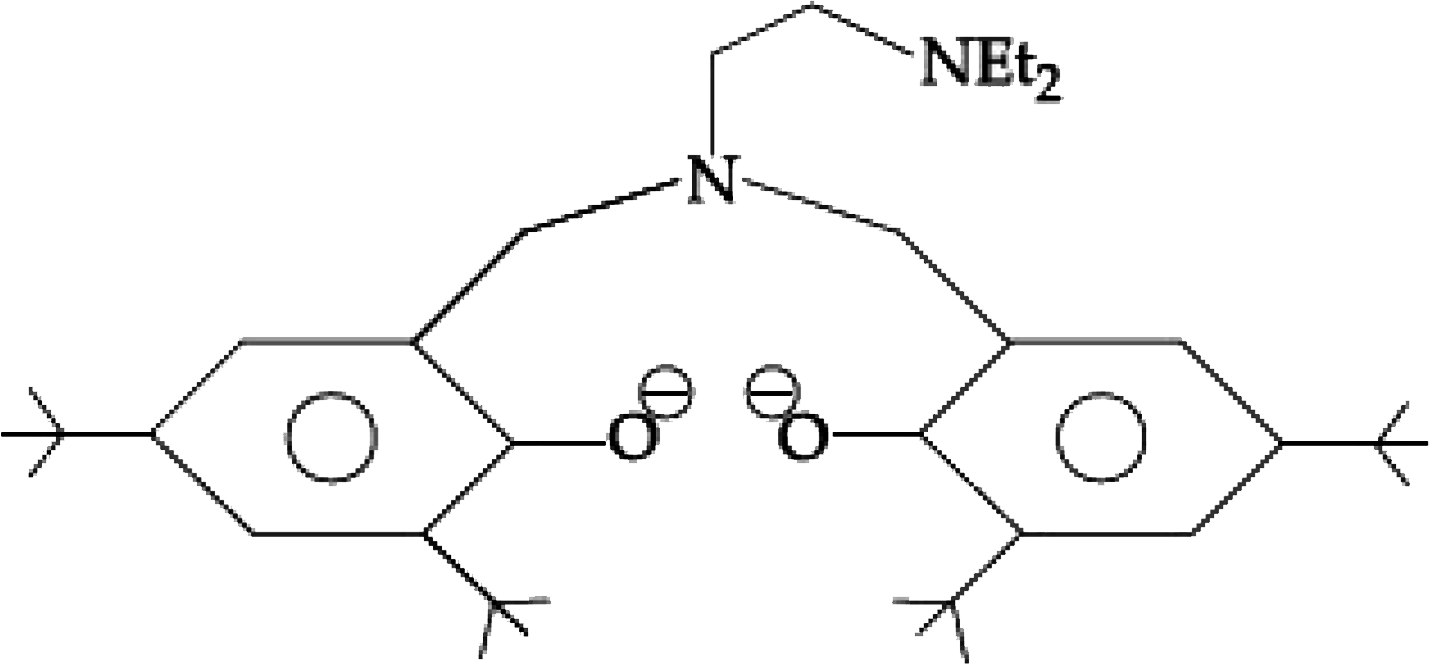Which of the following ligands does form a chelate ?
Acetate
Oxalate
Cyanide
Ammonia
The correct Answer is:B
To determine which ligand forms a chelate, we need to understand the concept of chelation and the types of ligands involved.
1. Understand Chelation: Chelation refers to the formation of a complex where a ligand binds to a metal ion at multiple points, forming a ring structure. These ligands are typically bidentate or polydentate.
2. Identify the Types of Ligands:
- Monodentate Ligands: These ligands can bind to a metal ion at only one site. Examples include acetate (CH3COO-), cyanide (CN-), and ammonia (NH3).
- Bidentate Ligands: These ligands can bind to a metal ion at two sites, allowing for the formation of a chelate. An example is oxalate (C2O4^2-).
3. Analyze the Given Ligands:
- Acetate (CH3COO-): This is a monodentate ligand as it can only bind through one oxygen atom.
- Oxalate (C2O4^2-): This is a bidentate ligand as it can bind through two oxygen atoms.
- Cyanide (CN-): This is a monodentate ligand as it can only bind through the carbon atom.
- Ammonia (NH3): This is also a monodentate ligand as it can only bind through the nitrogen atom.
4. Determine Which Ligands Form Chelates:
- From the analysis, only oxalate is a bidentate ligand that can form a chelate. The other ligands (acetate, cyanide, and ammonia) are monodentate and do not form chelates.
5. Conclusion: The ligand that forms a chelate among the given options is oxalate (C2O4^2-).
Final Answer:
The ligand that forms a chelate is oxalate (C2O4^2-).
- Monodentate Ligands: These ligands can bind to a metal ion at only one site. Examples include acetate (CH3COO-), cyanide (CN-), and ammonia (NH3).
- Bidentate Ligands: These ligands can bind to a metal ion at two sites, allowing for the formation of a chelate. An example is oxalate (C2O4^2-).
- Acetate (CH3COO-): This is a monodentate ligand as it can only bind through one oxygen atom.
- Oxalate (C2O4^2-): This is a bidentate ligand as it can bind through two oxygen atoms.
- Cyanide (CN-): This is a monodentate ligand as it can only bind through the carbon atom.
- Ammonia (NH3): This is also a monodentate ligand as it can only bind through the nitrogen atom.
- From the analysis, only oxalate is a bidentate ligand that can form a chelate. The other ligands (acetate, cyanide, and ammonia) are monodentate and do not form chelates.
The ligand that forms a chelate is oxalate (C2O4^2-).
Topper's Solved these Questions
- BOOK - ICSECHAPTER - ORGANIC CHEMISTRY : SOME BASIC PRINCIPLES AND TECHNIQUES EXERCISE - TRUE OR FALSE TYPE QUESTIONS50videos
ORGANIC CHEMISTRY : SOME BASIC PRINCIPLES AND TECHNIQUES
- BOOK - ICSECHAPTER - ORGANIC CHEMISTRY : SOME BASIC PRINCIPLES AND TECHNIQUES EXERCISE - FILL IN THE BLANK TYPE QUESTIONS46videos
ORGANIC CHEMISTRY : SOME BASIC PRINCIPLES AND TECHNIQUES
- BOOK - ICSECHAPTER - ORGANIC CHEMISTRY : SOME BASIC PRINCIPLES AND TECHNIQUES EXERCISE - ESSAY ( LONG ANSWER ) TYPE QUESTIONS42videos
ORGANIC CHEMISTRY : SOME BASIC PRINCIPLES AND TECHNIQUES
- BOOK - ICSECHAPTER - HYDROGENEXERCISE - NCERT TEXT-BOOK EXERCISE (With Hints and Solutions)53videos
HYDROGEN
- BOOK - ICSECHAPTER - REDOX REACTIONS (OXIDATION AND REDUCTION)EXERCISE - NCERT TEXT-BOOK. EXERCISES ((With Hints and Solutions)69videos
REDOX REACTIONS (OXIDATION AND REDUCTION)
Similar Questions
Knowledge Check
- Question 1 - Select One
Which of the following ligands will not show chelation ?
AEDTABDMGCEthane-1, 2- diamineDSCN− - Question 2 - Select One
Which of the following ligand gives chelate complexes ?
AAcelateBOxalateCCyanideDAmmonia
Which of the following does not form a sol?
View SolutionWhich of the following ligand does not as π−acid ligand?
View SolutionWhich of the following does not form alums?
View SolutionWhich of the following ligands may be flexidentate ?
View SolutionWhich of the following noble gases does not form clatherates?
View SolutionWhich of the following ligands are π acceptor ?
View Solution


